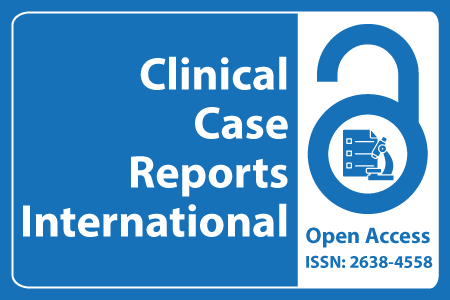
Journal Basic Info
- Impact Factor: 0.285**
- H-Index: 6
- ISSN: 2638-4558
- DOI: 10.25107/2638-4558
Major Scope
- Nephrology
- Inflammation
- Women’s Health Care
- Pain Management
- Neurology
- Veterinary Sciences
- Medical Radiography
- Neonatology
Abstract
Citation: Clin Case Rep Int. 2023;7(1):1516.DOI: 10.25107/2638-4558.1516
Hepatotoxicity of Microcystin-LR in Wistar Rats
Abeysiri HASN, Wanigasuriya JKP, Suresh TS, Beneragama DH and Manage PM
Department of Zoology, Centre for Water Quality and Algae Research, University of Sri Jayewardenepura, Sri Lanka
University of Sri Jayewardenepura, Sri Lanka
Department of Medicine, Centre for Kidney Research, University of Sri Jayewardenepura, Sri Lanka
Department of Biochemistry, University of Sri Jayewardenepura, Sri Lanka
Department of Pathology, University of Sri Jayewardenepura, Sri Lanka
PDF Full Text Research Article | Open Access
Abstract:
Microcystins produced by cyanobacteria have been identified as potent hepato and neurotoxicants to human and livestock. The present study was aimed to determine the possible hepatotoxic effects of MC-LR on mammals using male Wistar rats as an animal model. Thirty-five rats were divided into five groups (n=7 in each). Test groups were orally treated with different doses of MCLR (0.105 μg/kg, 0.070 μg/kg and 0.035 μg/kg). Well water contaminated with MC-LR (0.091 μg/ kg) was given to the environmental exposure group and distilled water was administered to the control group. Body weight was measured once a week. The total duration of exposure of the rats was 90 days. Blood samples were collected at 0, 7, 14, 28, 42, 60, 90 days. Serum concentrations of Aspartate Amino Transferase (AST) and Aspartate Alanine Transferase (ALT) were analyzed from each blood sample. At the end of the experimental period, liver samples were collected for histological examination following accepted protocols. The mean bodyweight of the rats in treated groups of rats gradually increased until the twelfth week and decreased thereafter. A significant decrease in body weight of rats with MC-LR exposure was seen at 13 and 14 weeks, compared to the control group (p=0.000). The absolute and relative weights of livers of the treated groups were significantly lower than the control group (p<0.05). The highest serum AST and ALT levels were observed in rats that were given MC-LR at the dose of 0.105 μg/kg. The hepatocytes showed mild changes including sinusoidal congestion and vascular congestion with lobular inflammation, focal hemorrhages and marked microvesicular steatosis in 0.105 μg/kg group. Mild lobular inflammation, focal hemorrhage, perivenular inflammation, prominent Kupffer cells and focal microvesicular steatosis were observed in 0.091 μg/kg group. Mild lobular inflammation was seen in the group given the dose of 0.070 μg/kg. In conclusion, this study demonstrated that long-term exposure to MC-LR can cause hepatotoxicity in Wistar rats.
Keywords:
Microcystin-LR (MC-LR); Wistar Rats; AST; ALT; Histopathology
Cite the Article:
Abeysiri HASN, Wanigasuriya JKP, Suresh TS, Beneragama DH, Manage PM. Hepatotoxicity of Microcystin-LR in Wistar Rats. Clin Case Rep Int. 2023; 7: 1516.













